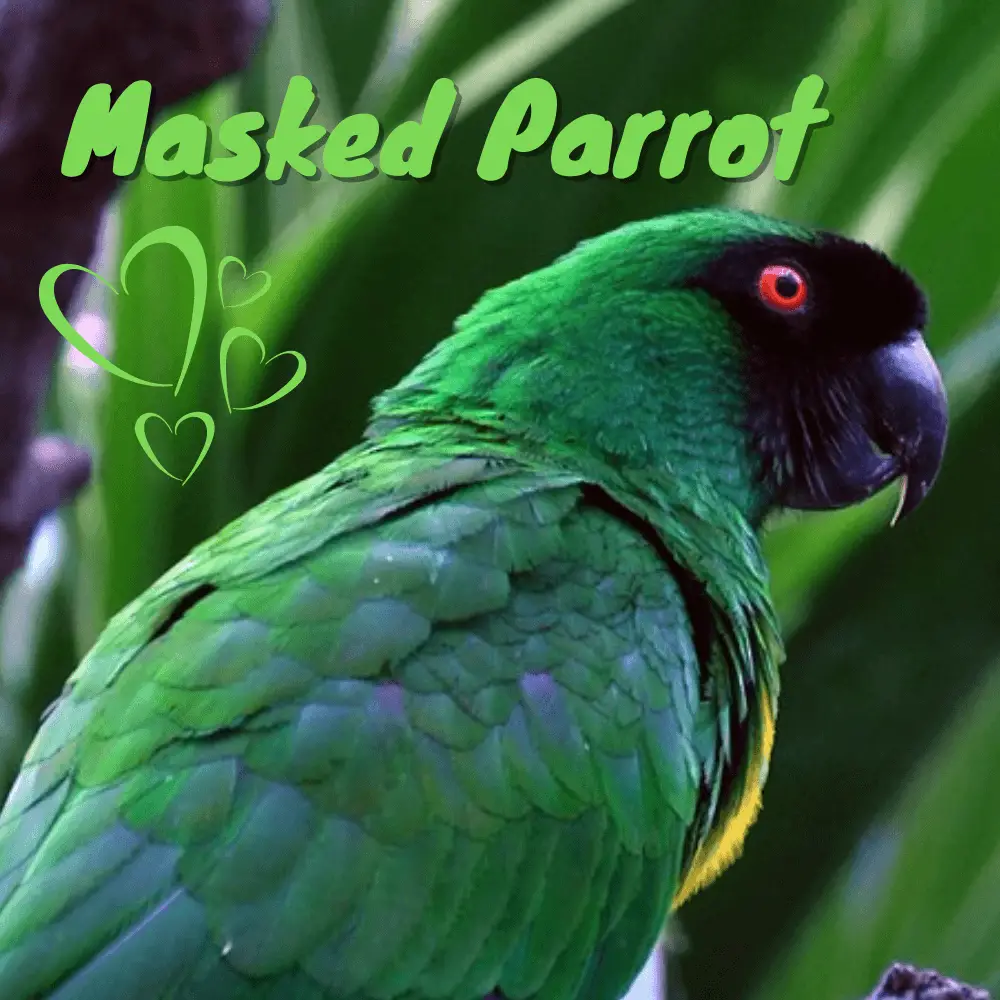
Masked Parrot or Masked Shining Parrot 47 cm. Bright green, with black forehead and area on the face round eye to chin, broad yellow rough-edged patch from upper breast to vent, where turns to red; outer webs of primaries deep blue;
tail below brownish-black. The Masked Parrot Female has a smaller bill. Immature has a paler bill.
Systematics History
Monotypic.
Subspecies
Monotypic.
Distribution
Viti Levu, in SW Fiji; perhaps formerly on Ovalau.
Habitat
Mature forest, secondary growth, edges of villages, mangroves, subsistence gardens, from coasts up to 1200 m.
Movement
Sedentary.
Diet and Foraging
Seeds and fruits including wild figs; also cultivated fruits such as Inocarpus fagiferus, guavas, and mangoes; flowers of banana palms; caterpillars; and ripening grain.
SOURCE: Peter Odekerken
Sounds and Vocal Behavior
Masked Shining Parrot Calls include several short harsh notes such as a nasal “krryeh”, a grating “krrreh” or more drawn-out “krrraah” and similar variants.
Breeding
Jul–Sept. Masked Parrot Nest in a hole in a tree. Eggs 2, although locals have reported 3–4 young in family parties.
Conservation Status
Not globally threatened. CITES II. Currently considered Near Threatened. A BirdLife “restricted-range” species.
Fairly common, and very frequent in the Nausori Highlands in 1970, but some concern remains over the impact of fragmentation of habitat with continuing forest clearance.




















